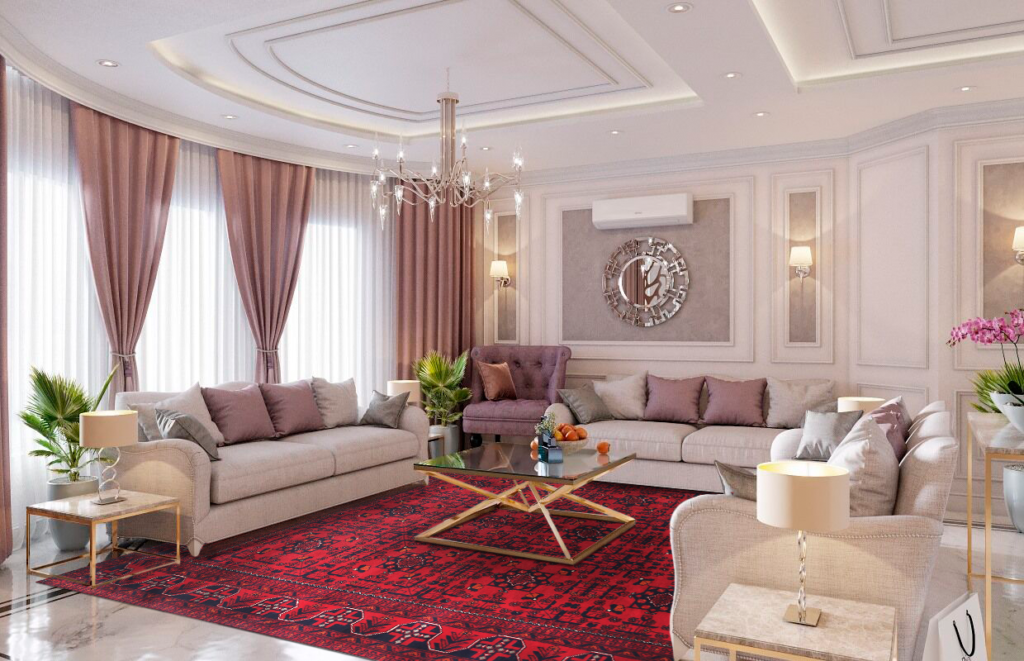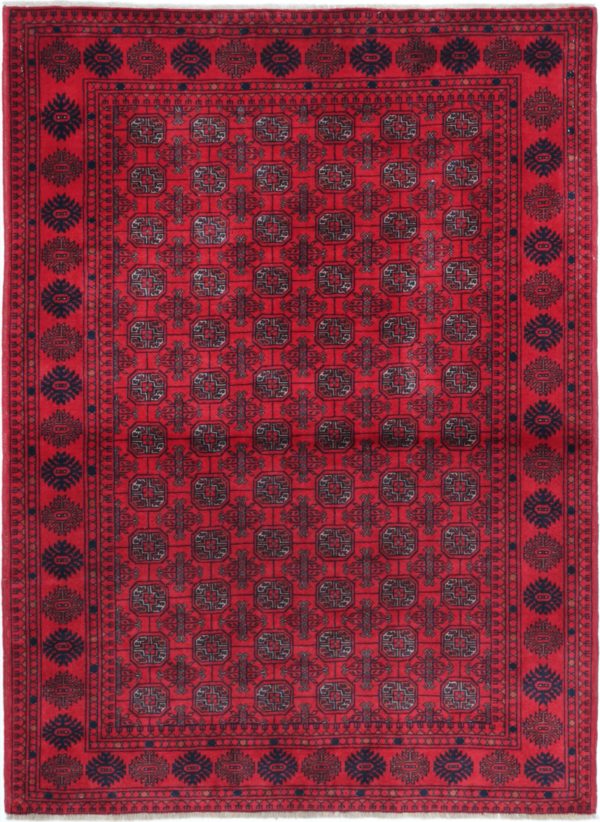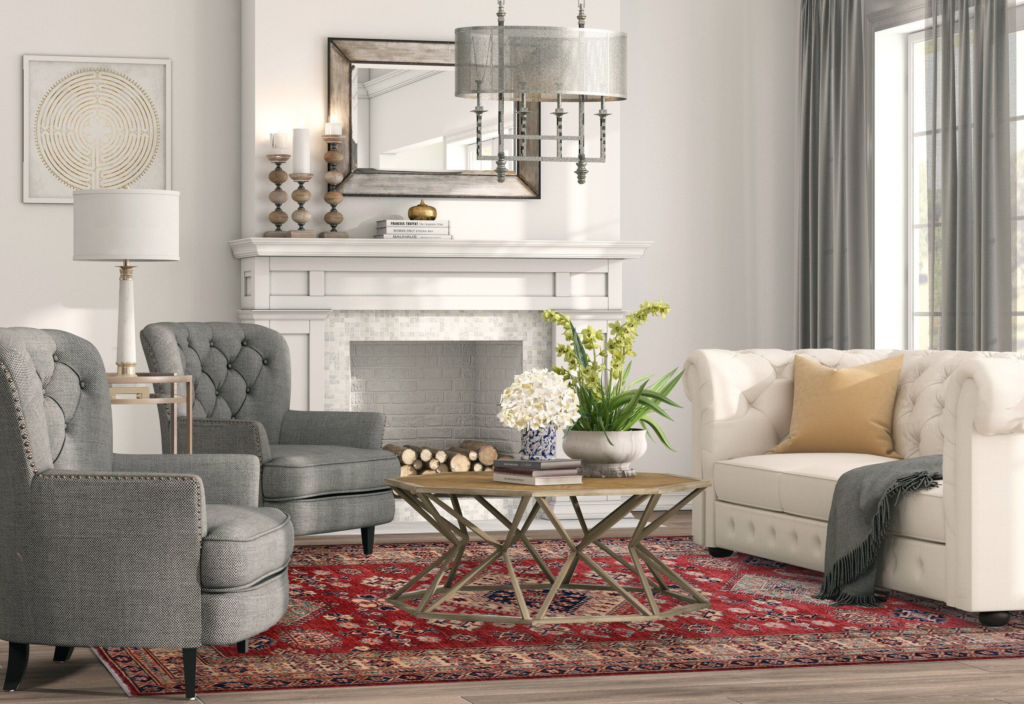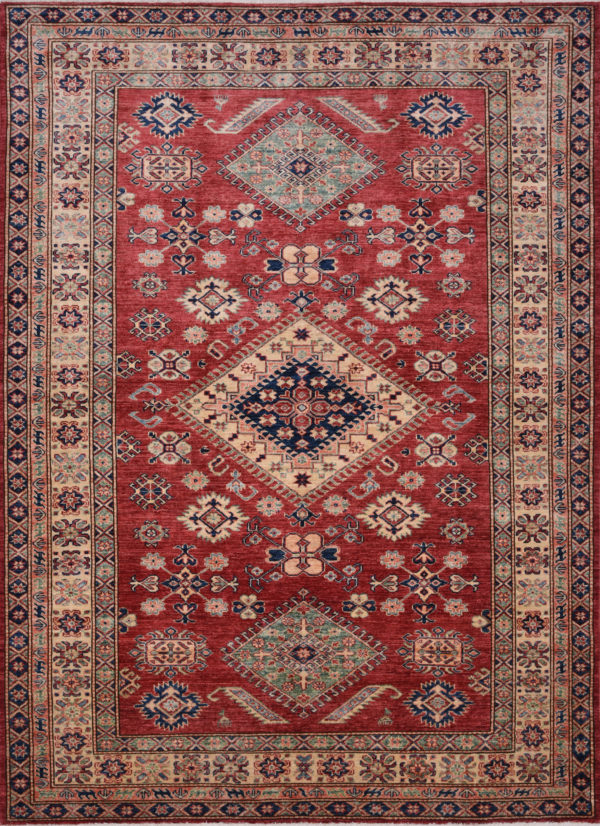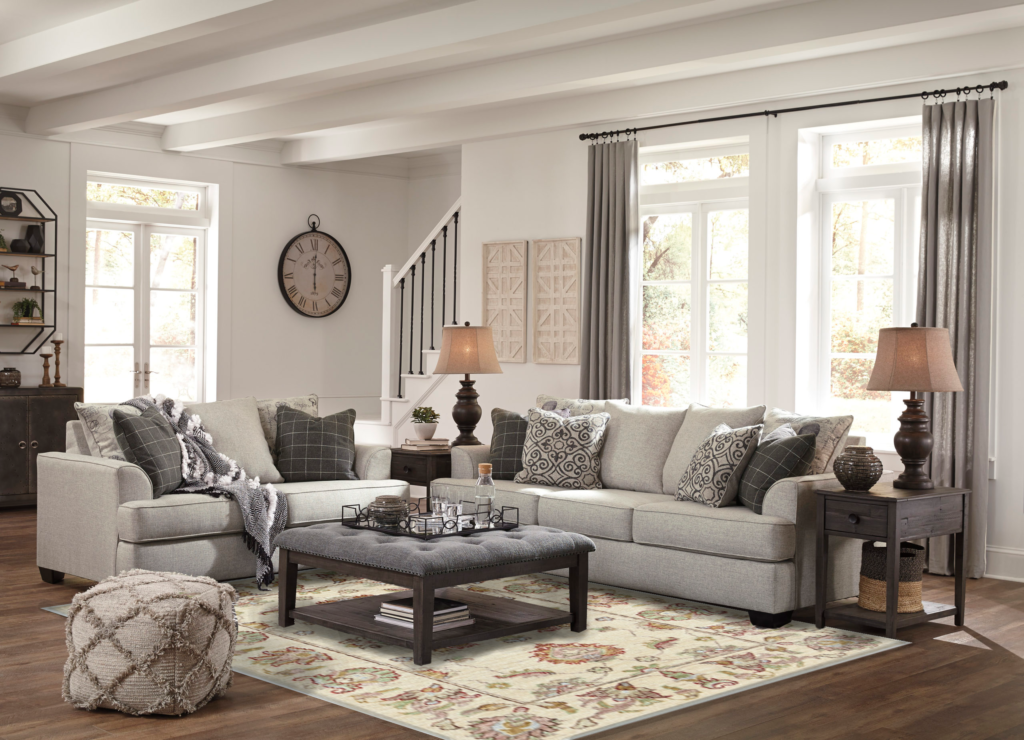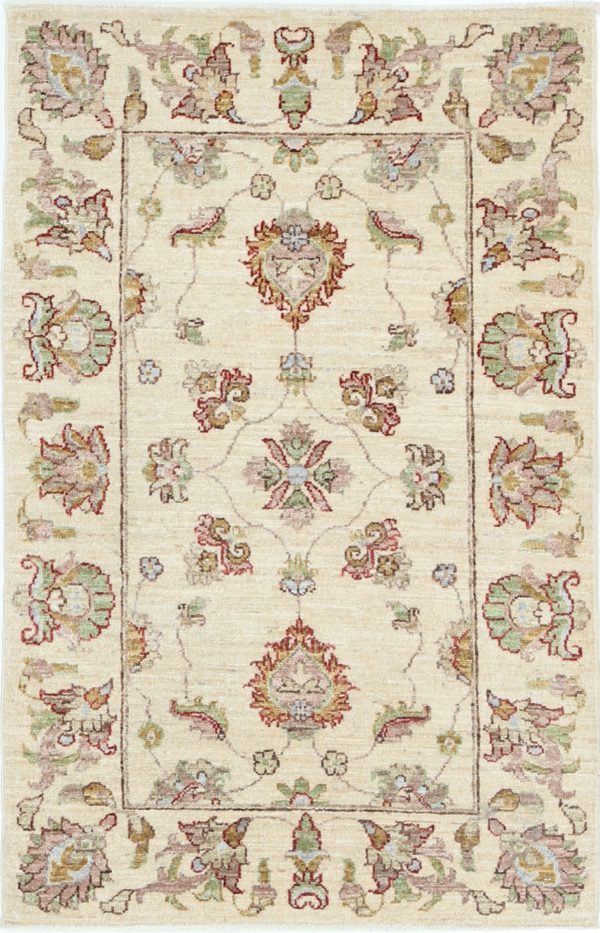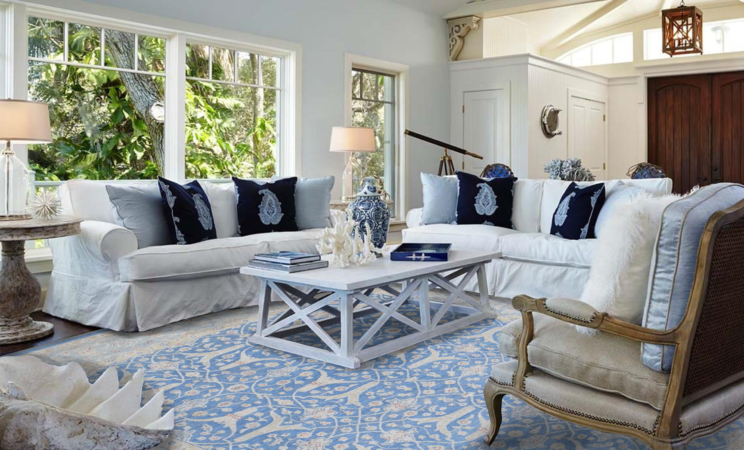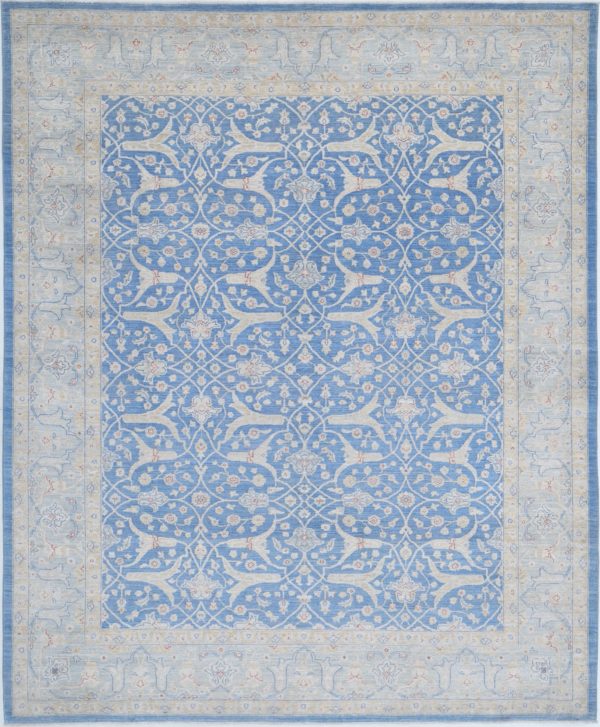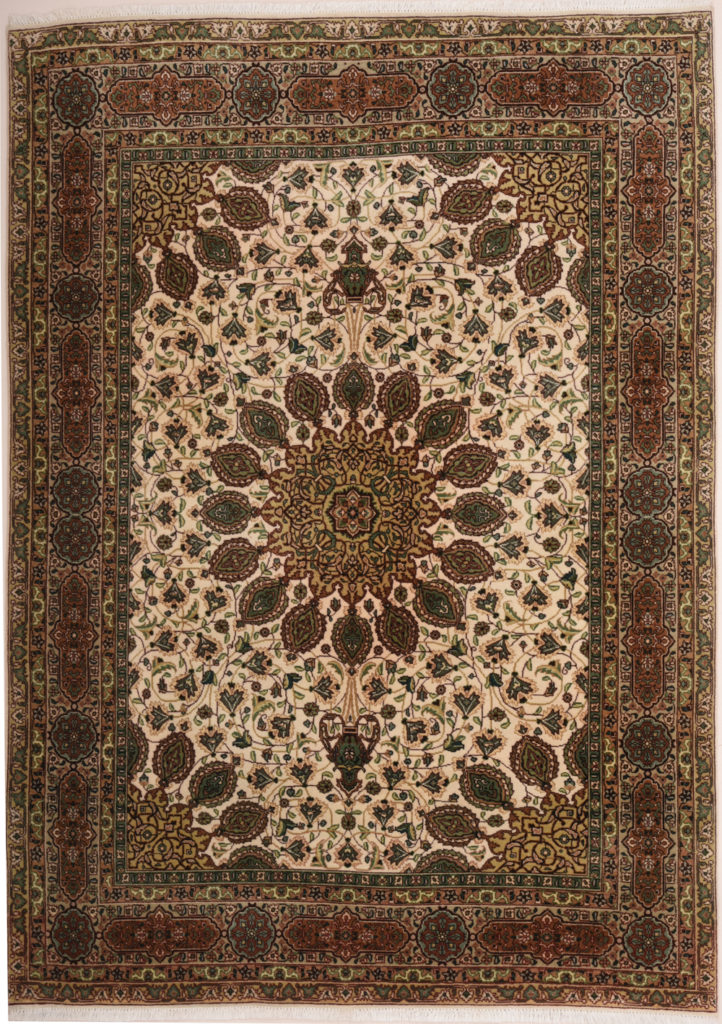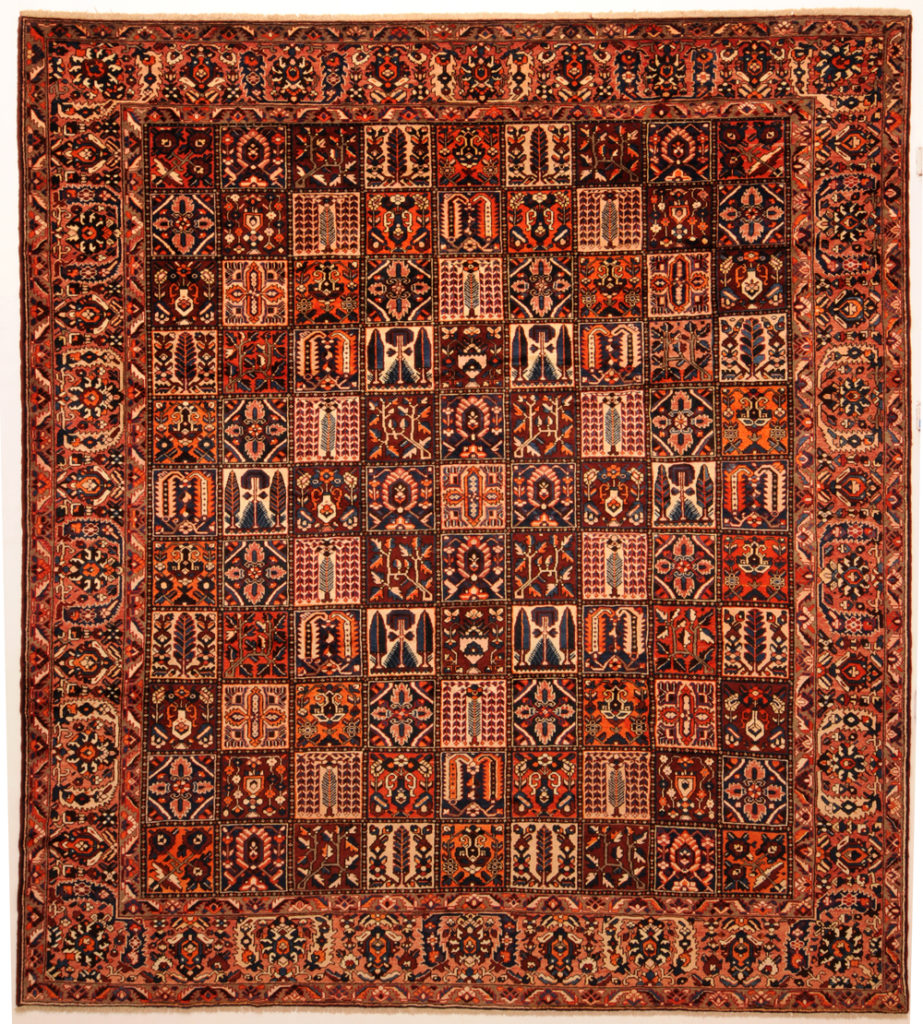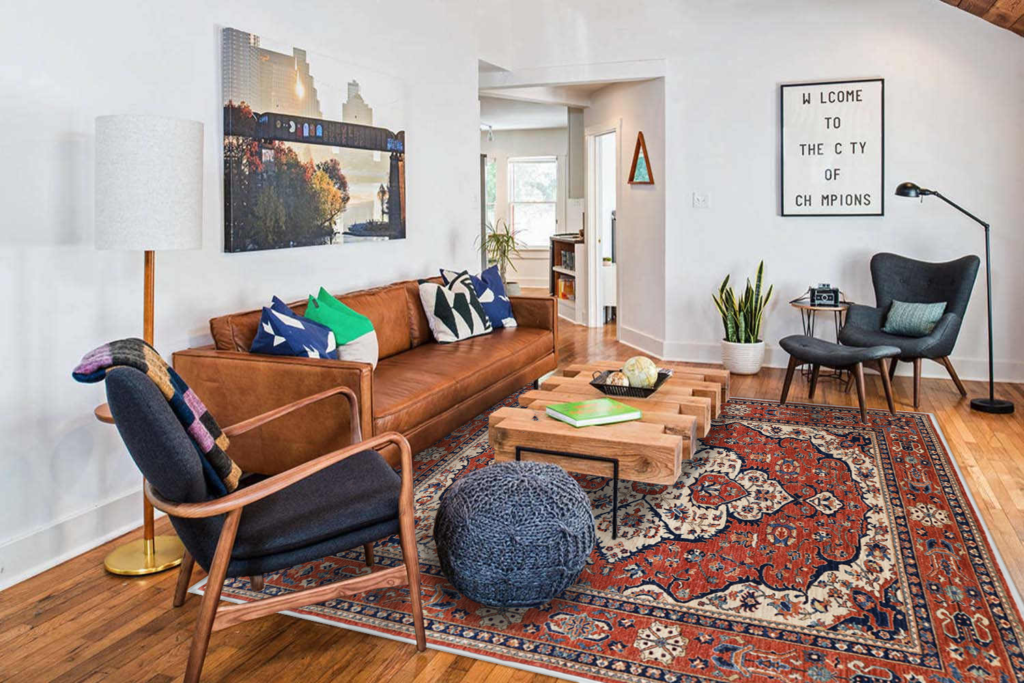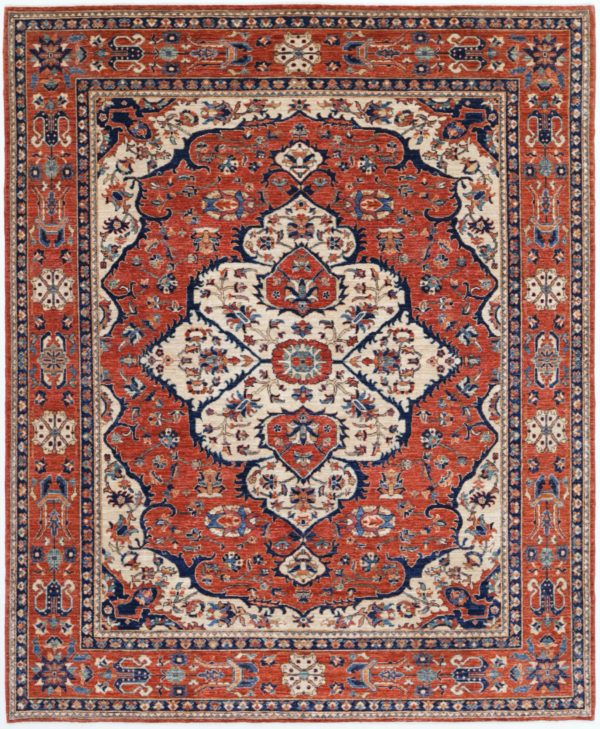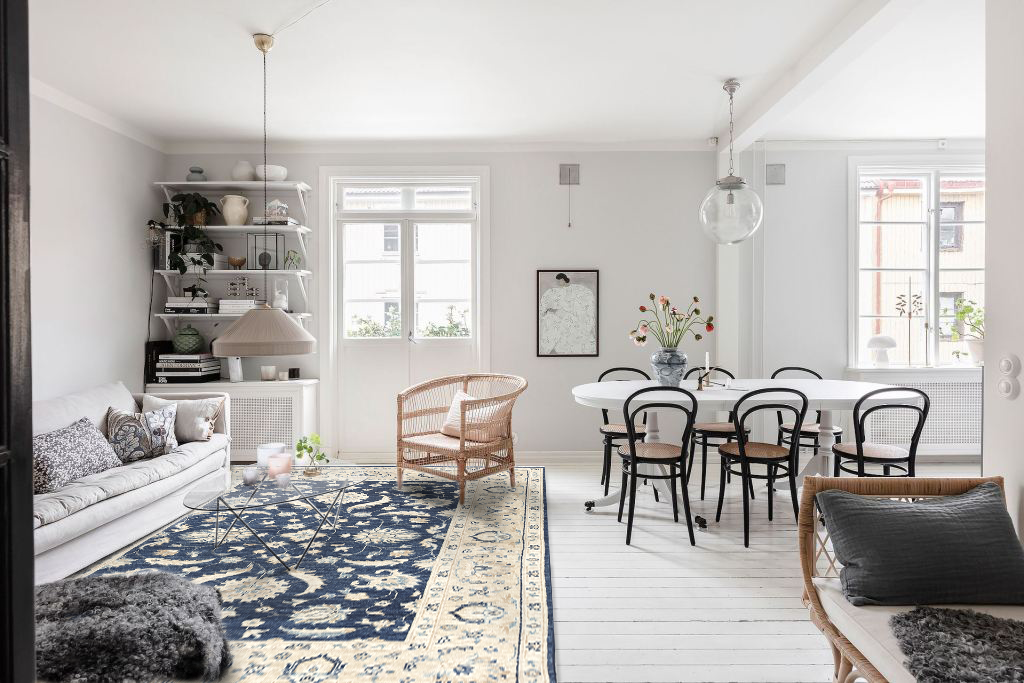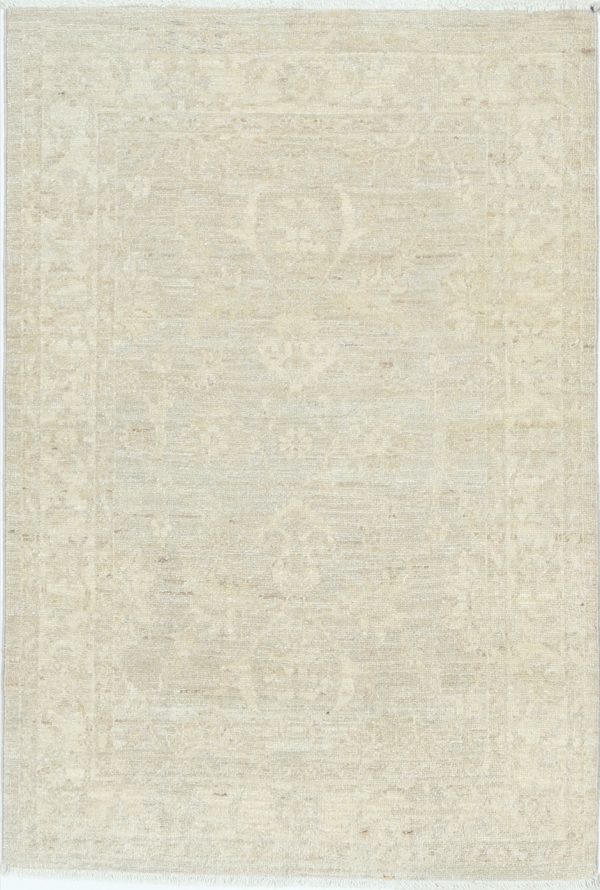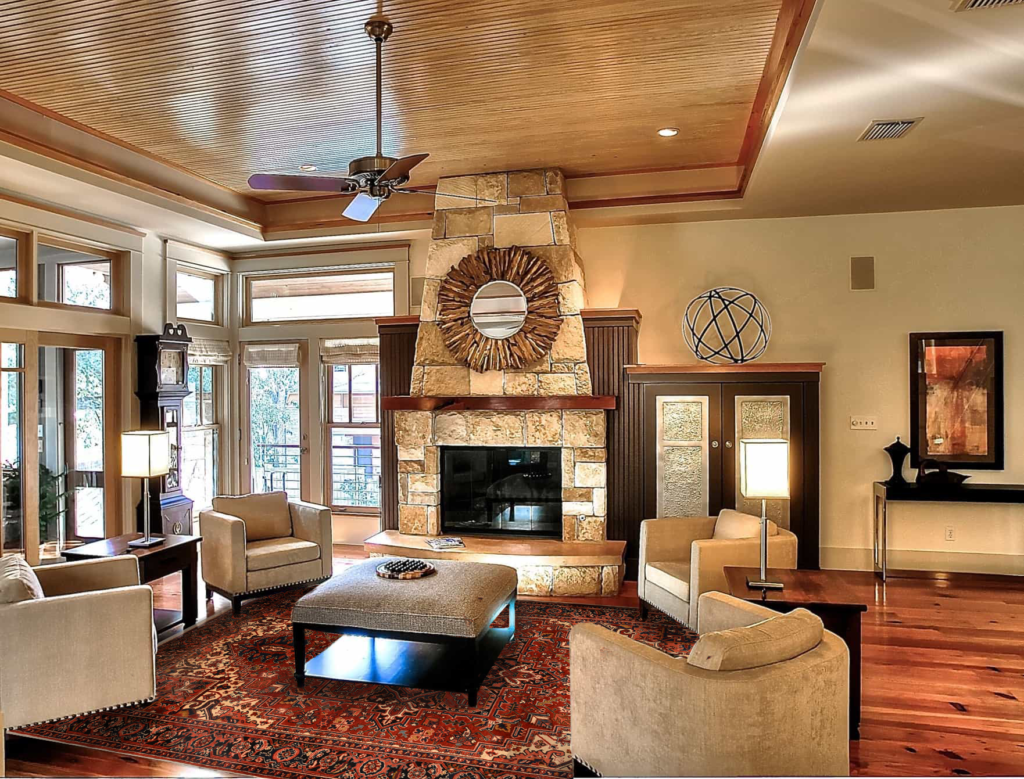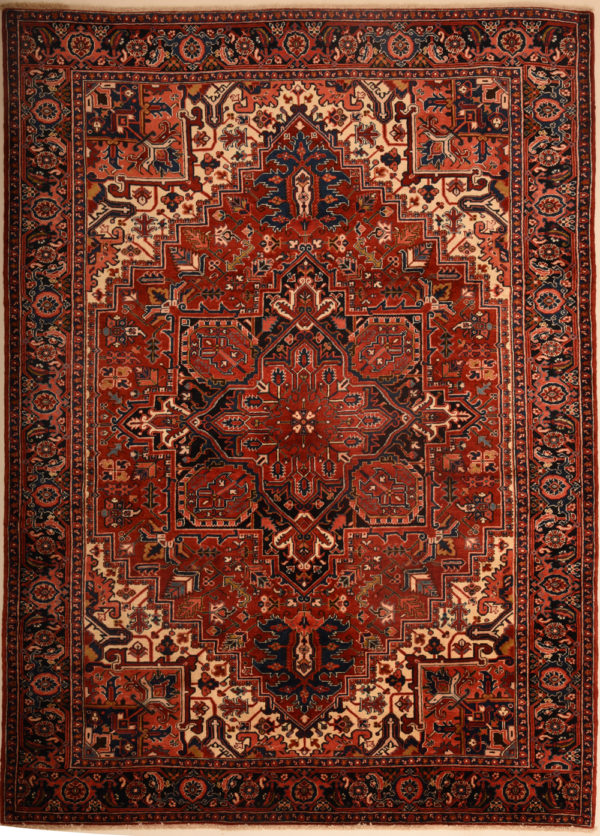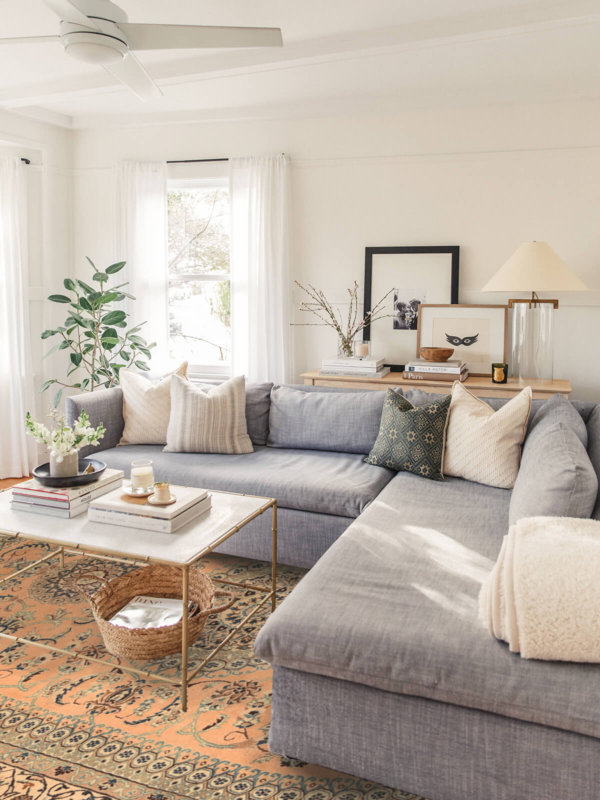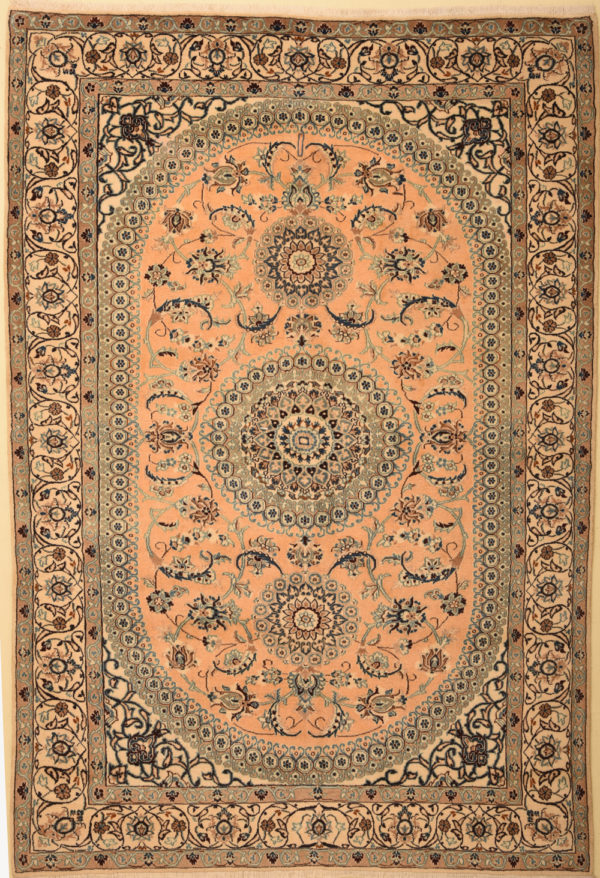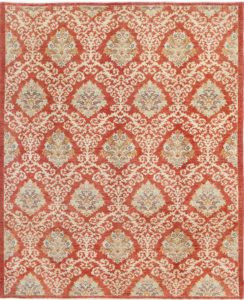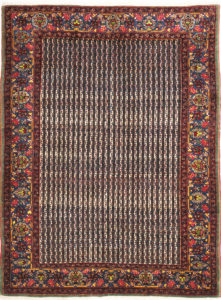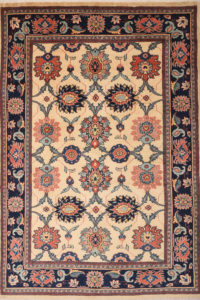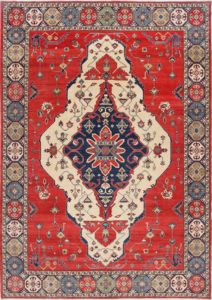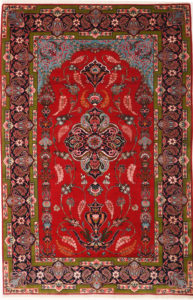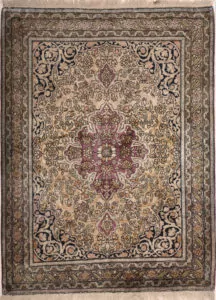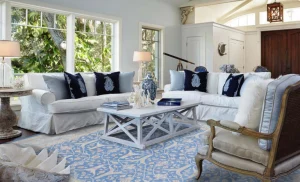Table of Contents
The number of interior design styles is almost endless!
Whether you enjoy a cozy and comfortable home or a sleek and modern space, there is a style to suit your preferences. In this article, we will provide you with an overview of some of the most popular interior design styles and what defines each style!
Modern
Modern interior decorating is all about clean lines and simple silhouettes, and bold geometric shapes. These elements are carried through all elements of a design from light fixtures and artwork to large furniture pieces.
Modern design favors clean and clutter-free environments where there is a place for everything. Pieces favor functionality and the idea of creating a balance of form and function is at the forefront of modern style.
Key design elements:
- Simple Shapes and clean lines
- The contrast of natural and industrial materials
- Open designs
- Uncluttered spaces
Adding a Persian rug into your modern living room is a great way to add a bold pop of color. If your space is relatively neutral you can use the rug to pull in more of your accent color and liven up the space. If you are using red in your color palette something like the Khal Mohammadi is a great option.
Traditional
The traditional design is a timeless style that has been around for centuries. It is typically characterized by classic elements and furnishings. It often incorporates elements from different time periods. The traditional design is generally formal and elegant while bringing in timeless and classical elements.
Traditional styles often incorporate solid and sturdy wood furnishings, upholstered pieces in shades of cream, white or beige, and warm wood tones. Designs often incorporate curves and rounded contours that create ornamental silhouettes.
Chandeliers, antiques, throw pillows, area rugs, and framed paintings often work to accent the rooms.
- Key Design Elements:
- Ornamental Designs
- Curved and rounded silhouettes
- Wood tones and warm neutrals
- Classical inspiration
Traditional styles bring in lots of warm and wood tones so a warm-toned rug is a perfect addition to the space. A rug like the Kazak 5’8 x 7’7 is a great way to add traditional patterning and colors into a space.
Transitional
Transitional design is a style that combines different elements from traditional and modern styles. It creates harmony between the two popular styles. Transitional designs can include elements of clean lines, neutral colors, and natural materials.
It is a popular style for homes with an open floor plan, as it can help to make a cohesive look throughout the space. If you are looking for a way to freshen up your existing space, transitional design is a great option because it incorporates a variety of elements.
Key Design Elements:
- Neutral color palette
- Refined artwork and accessories
- Soft and natural textiles
To continue your neutral color palette for a transitional space you may consider bringing in a rug like the Oushak 2’7 x 4’. The refined pattern adds a subtle floral element to the space that is not overpowering.
Coastal
The coastal design style brings the beach to your home. The style brings in light and fresh beachy elements to create an inviting and relaxing space. It mainly uses neutrals of whites, tans, and beiges with accent colors of aqua and blue. Natural fabrics like jute, seagrass, and straw help to bring in a natural coastal appearance.
Key design elements:
- Blue accents
- Decorative elements like rope, driftwood, and shells
- Nautical patterns
Choosing a rug for a coastal space you will want to make sure to create a cohesive color scheme. This can either be using neutral colors or incorporating your blue accent colors. The Oushak 7’7 x 9’3 is a great option to add in more blue elements to your coastal space.
Bohemian
Bohemian interior design styles break free from any of the hard rules that styles like modern and traditional have. It is defined by a lack of structure and a mix of layering patterns, textures, and colors.
The style is inspired by 19th-century Paris artists, writers, and performers who viewed creativity as more valuable than money.
The style can incorporate layering of eclectic patterns, a variety of lighting, and highly saturated colors.
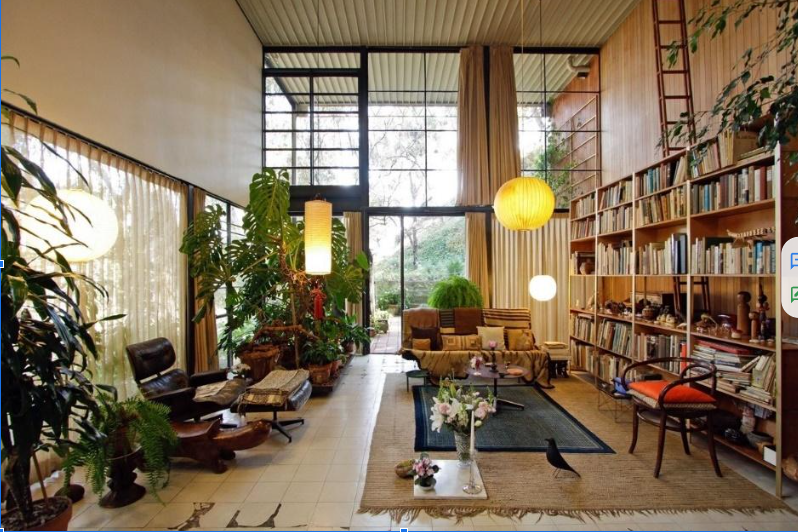
Key design features:
- Layering
- Mix and match colors and patterns to create unique looks
The layered bohemian style is a perfect way to incorporate a rug. Adding various textures and patterns helps to develop the design style and create a unique look. This style is a great opportunity to use bold colors and patterns.
When choosing a rug you can easily work in almost any design, from something like the Bakhtyari 12’4 x 13’6 or the Tabriz 5’ x 7’you have a lot of freedom to play around with your design choices.
Mid-century Modern
Mid-century modern brings back the popular styles of the mid-20th century. With simple wood pieces, teak and organic, rounded shapes are popular elements.
Material is a big part of mid-century design, while teak is a popular choice, oak and rosewood are popular options for tables, desks, and consoles. Metal, glass, and vinyl are often used to create unique pieces.
The curved design in furniture can be seen anywhere from rounded edges of a chair to the curved, almost round sofas and uniquely shaped coffee tables.
Color is often incorporated as bold accents in a room. Making a unique piece stand out in a room.
Key Design Features:
- Combination of natural and man-made materials
- Vibrant accent colors
- Minimalist
Incorporating a Persian rug into a mid-century modern space can really help to elevate the design. It is a style that is versatile with the use of colors and patterns so you have a lot of freedom to bring in whatever style suits your take on mid-century design.
It is a great way to bring in your accent colors, if you are using warm colors the Kazak 8’ x 9’8 can work for either cool or warm-toned accents. The rug is another opportunity for you to incorporate the popular organic patterns of the style.
Minimalist
Minimalist interior design is based on simple, clean lines and a monochromatic color palette. Colors can be used as an accent to a space, but are rarely the focus. It combines an open concept space, with lots of light and functional furniture.
Within a minimalist space there are only the essential pieces of furniture. With no excessive ornamentation or decoration. Minimal pieces may be added to highlight the space like a piece of artwork on the wall or a vase on a table.
Key Design Features:
- Clean lines
- Only the essential furnishings
- Monochromatic colors
In a modern space, a Persian rug can help to give the space a bit more interest by incorporating pattern and texture. It can be used as a thoughtful accent. You can bring in a rug that helps to continue the monochromatic color scheme within the space, for example, if you’re looking for ivory and grey the Oushak 2’8 x 3’10 may be the perfect piece to complete a color palette.
Rustic
Rustic design can also be considered lodge style. It is based on natural elements and brings in characteristics of rough, aged, and casual design. The main focus to achieving this look is the natural element this can mean lots of natural wood in furniture and beams as well as the use of natural stone. Fabrics like burlap and canvas can be great natural accents to create the right feeling in a space.
The color palettes often revolve around the natural world bringing in lots of neutrals and earthy tones. Greens, brown and gray blend nicely, and warm tones help to make the style feel more inviting.
Key Design Elements:
- Natural pieces
- Earthy color palette
A rug like this Heriz 7’10” x 11’ is the perfect addition to a rustic space. The deep reds and oranges complete the earthy color palette and keep the space feeling warm and homey.
Scandinavian
Scandinavian design is a type of minimalist design. It bases its style on only the necessary pieces and a refined selection to create clutter-free and organized spaces. It creates a balance with the sleek décor making it feel warm and inviting through the use of textures and soft colors.
There is also a focus on bringing nature inside. This can be through the use of natural light, natural woods, or other raw materials.
The word ‘Hygge’ is often used when discussing Scandinavian design. Some people mistake it for minimalism but the word means “cozy togetherness”, this means that you want to bring in homey and comfortable elements; like throw blankets, and candles and if you have a fireplace; make it the focal point of the room.
Key Design Feature:
- Soft hues
- Modern furnishings
- Bright, light and airy
The beige and blue tones of the Nain 6’7” x 9’8” is the perfect piece for a Scandinavian home. Choosing a piece with more muted colors suits the light and airy feeling of the style. It is able to make the home feel comfortable and inviting while adding an element of pattern and design.
